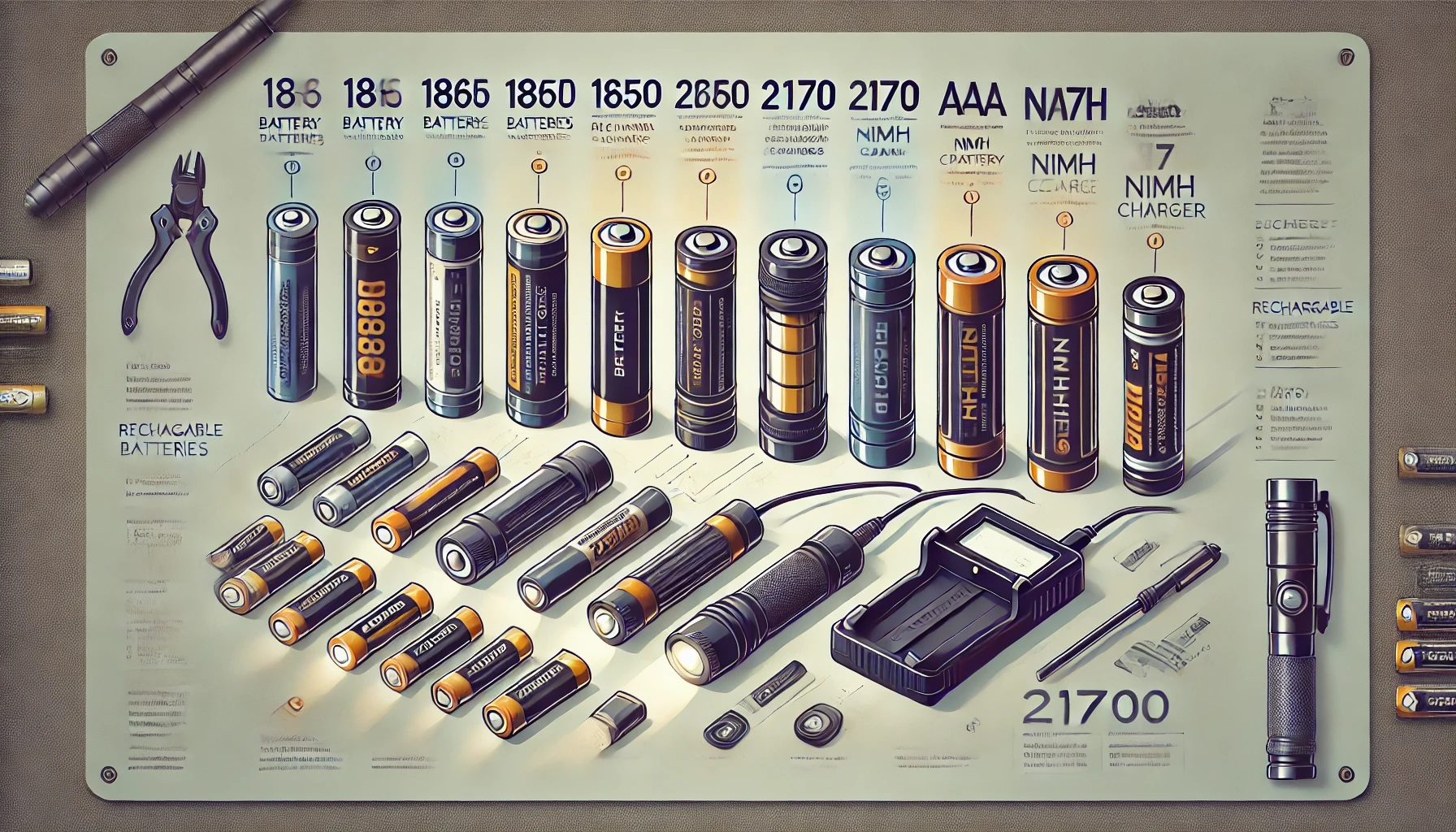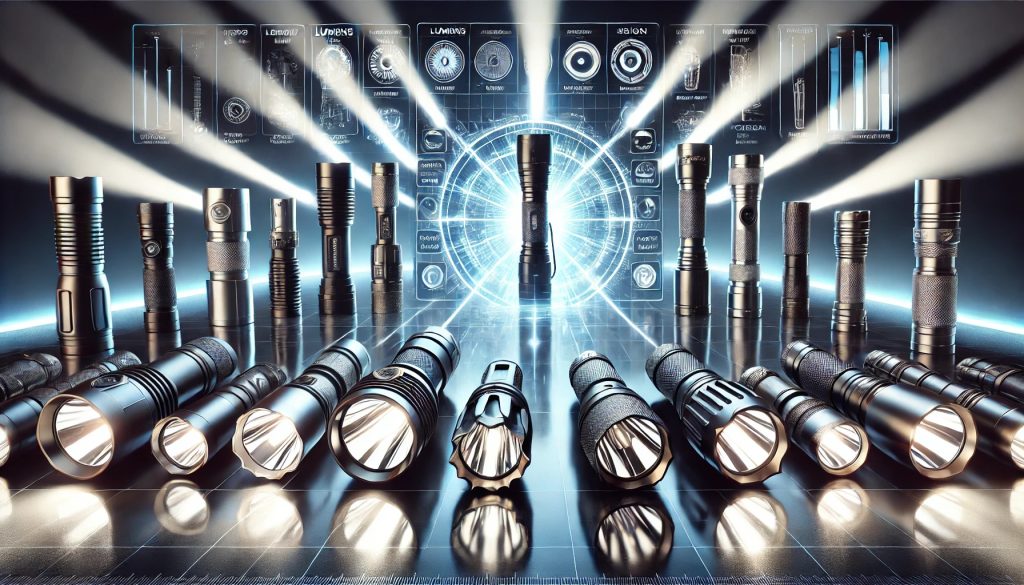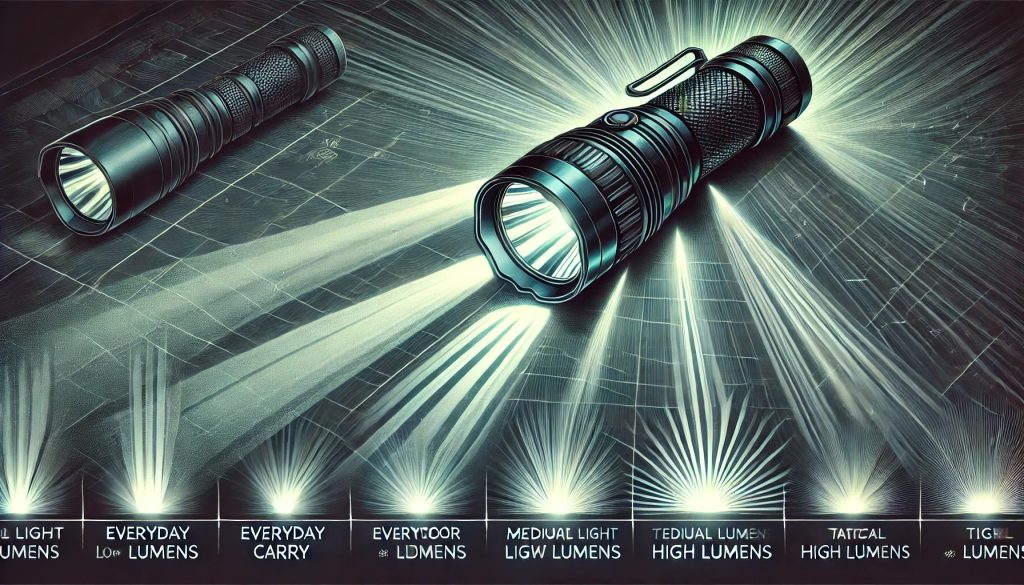The power source is the heart of any high-performance flashlight. While disposable batteries have their place, rechargeable batteries for high-performance flashlights offer significant advantages in terms of cost-effectiveness, environmental impact, and often, superior performance. Understanding the different types of rechargeable batteries available will help you choose the right flashlight and manage its power needs effectively. This article will explore the common types of rechargeable batteries used in these powerful lighting tools, highlighting their characteristics, benefits, and drawbacks.
The Rise of Rechargeable Batteries in Flashlights
High-performance flashlights demand a lot of power to achieve their impressive lumen outputs and extended runtimes. Rechargeable batteries for high-performance flashlights have become the standard due to their ability to deliver high currents and be reused multiple times. This not only saves money in the long run but also reduces the amount of battery waste.
Common Types of Rechargeable Batteries
Several types of rechargeable batteries are prevalent in the world of high-performance flashlights:
1. Lithium-ion (Li-ion) Batteries
Lithium-ion batteries are the most common type found in modern high-performance flashlights. They offer a high energy density, meaning they can store a lot of power for their size and weight. Li-ion batteries also have a low self-discharge rate, so they hold their charge well when not in use.
- Pros: High energy density, lightweight, low self-discharge, can handle high discharge rates.
- Cons: Can be sensitive to overcharging and deep discharging (protection circuits are usually built-in), lifespan is limited by the number of charge cycles.
Within the Li-ion family, several specific form factors are widely used in flashlights:
- 18650 Batteries: These cylindrical batteries are 18mm in diameter and 65mm long. They are a popular choice for their balance of capacity and size.
- 21700 Batteries: Slightly larger than 18650s (21mm diameter, 70mm long), 21700 batteries generally offer higher capacity and can handle higher discharge rates, leading to longer runtimes and potentially brighter outputs.
- Other Form Factors: You might also encounter other Li-ion sizes like 14500 (AA size), 16340 (CR123A size), and 26650 (larger capacity).
2. Nickel-Metal Hydride (NiMH) Batteries
NiMH batteries are another rechargeable option, although less common in the very high-performance category compared to Li-ion. They are known for their good capacity and are generally more robust and less prone to thermal runaway than some Li-ion chemistries.
- Pros: More robust than some Li-ion chemistries, readily available in standard sizes (like AA and AAA), no memory effect (in modern formulations).
- Cons: Lower energy density than Li-ion, higher self-discharge rate.
Factors to Consider When Choosing Batteries
When dealing with rechargeable batteries for high-performance flashlights, several factors come into play:
- Capacity (mAh): Measured in milliamp-hours, capacity indicates how much energy the battery can store. Higher capacity generally means longer runtime.
- Voltage (V): The voltage of the battery must be compatible with the flashlight’s requirements. Most Li-ion flashlight batteries operate around 3.7V.
- Discharge Rate (C-rating): This indicates how quickly the battery can deliver its power. High-performance flashlights often require batteries with high discharge rates to achieve maximum brightness.
- Protection Circuits: For Li-ion batteries, built-in protection circuits are crucial to prevent overcharging, over-discharging, and short circuits, enhancing safety and prolonging battery life.
Charging Your Rechargeable Batteries
Proper charging is essential for maximizing the lifespan and performance of your rechargeable batteries for high-performance flashlights. Using a dedicated Li-ion battery charger is highly recommended, as these chargers are designed to charge batteries safely and efficiently, often with features like overcharge protection. Some flashlights also have built-in charging ports, offering convenience.
Related Article: Now that you understand the power source, you might be interested in how that power translates into visible light. Our article on “The Science Behind Lumens: Understanding Flashlight Brightness” explains this crucial aspect of flashlight performance.
Conclusion: Powering Your Illumination with the Right Rechargeable Batteries
Choosing the right type of rechargeable batteries for high-performance flashlights is crucial for optimal performance, runtime, and safety. Lithium-ion batteries, particularly in 18650 and 21700 formats, are the dominant choice due to their high energy density and ability to deliver high power. Understanding the characteristics of different battery types and practicing proper charging habits will ensure that your high-performance flashlight is always ready to shine brightly when you need it most. You can explore further information on battery technology from reputable sources like battery university.


